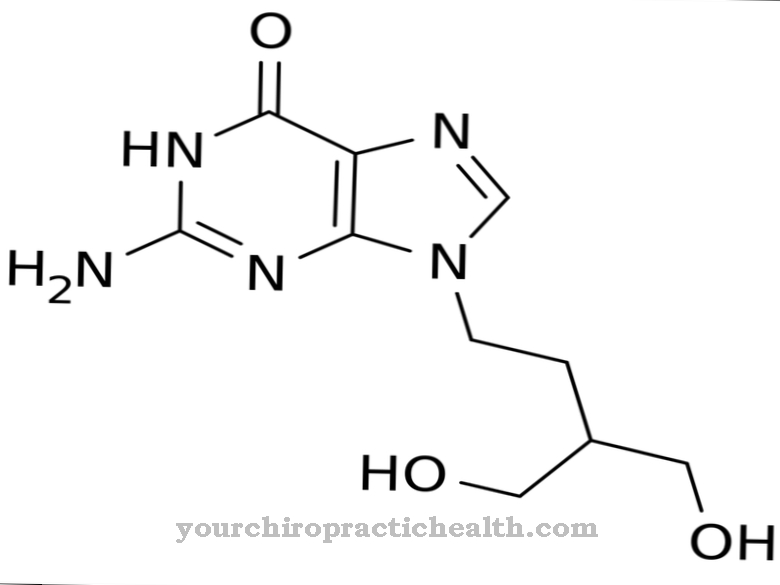The active pharmaceutical ingredient Tazobactam is a beta-lactamase inhibitor and supports and strengthens the antibacterial effect of the beta-lactam antibiotic piperacillin, without being antibiotic itself. Tazobactam binds irreversibly to the enzyme beta-lactamase, which is produced by some pathogenic bacteria and can inactivate beta-lactamase antibiotics. Because of its binding properties, tazobactam is only used in combination with piperacillin.
What is tazobactam?

Tazobactam is an active pharmaceutical ingredient classified as a beta-lactamase inhibitor or inhibitor. The active ingredient has a similar structure to beta-lactam antibiotics without being antibiotic itself. Like other beta-lactamase inhibitors, tazobactam has the typical beta-lactam ring. It is a heterocyclic 4-membered ring, which is occupied with 3 carbon atoms and one nitrogen atom. The water-soluble sodium salt of tazobactam with the chemical molecular formula C10H11N4NaO5S is medicinally effective.
The physiological effect of tazobactam is its ability to bind to the enzyme beta-lactamase, which is released by some pathogenic bacteria. In beta-lactam antibiotics, which also include penicillins, the enzyme cleaves the beta-lactam ring. This neutralizes the antibiotic effect of the specific antibiotics.
To prevent the antibiotic effect from being reversed, beta-lactamase inhibitors are combined with beta-lactam antibiotics. The inhibitors bind to the beta-lactamase and thus neutralize the physiological effect on lactam antibiotics. Tazobactam is only given in combination with the beta-lactam antibiotic piperacillin.
Since the combination preparation is not absorbed in the digestive tract (it is not acid-stable), the drug can only be administered parenterally, i.e. intravenously via infusion solution or intramuscularly via injection.
Pharmacological effect
The isolated pharmacological effect of tazobactam on the body and organs is not known, as the drug is only used in combination with piperacillin. As with other antibiotics from the penicillin group, the main active ingredient of piperacillin is an acylaminopenicillin. The active ingredient inhibits the build-up of their cell walls in various types of bacteria, so that they are no longer able to divide and are killed.
Due to the less specific effect of acylaminopenicillins, there is a good broad spectrum effect against many different pathogenic types of bacteria, but vital and useful bacteria are also impaired. This can result in side effects that may require discontinuation of treatment.
The main areas that can be affected are the white blood cells (leukocytes), platelets (thrombocytes), veins and kidneys. In addition, there can be changes in the electrolyte balance. For example, a reduced potassium level can set in, which, among other things, can lead to heart rhythm problems.
Medical application & use
Medicines that are made up of a combination of tazobactam and piperacillin are classified as broad-spectrum antibiotics or broad-spectrum penicillins. The combination preparations to be used parenterally are effective against a large number of different gram-positive and gram-negative germs. Also against anaerobic bacteria such as Haemophilus etc. Piperacillin is effective in conjunction with tazobactam.
In some cases, the combination of the two active ingredients can also successfully combat multi-resistant germs. Due to the broad and in part also specific antibacterial properties, combination preparations such as Pipitaz®, Tazobac®, Tazonam®, etc. Mainly used against severe internal abdominal infections, against infections of the urogenital tract and the biliary tract.
Tazobactam and piperacillin play an equally important role in the fight against the opportunistic pathogen Pseudomonas. The pseudomonads are rod-shaped, flagellated, gram-negative germs that are ubiquitous and only prove to be pathogenic in the case of a weakened immune system or an immune system artificially suppressed with drugs. However, they are difficult to combat as they have often developed multi-resistance to the most common antibiotics.
Severe general and mixed infections also belong to the preferred range of treatments for tazobactam, which is combined with piperacillin. In certain cases of severe sepsis caused by bacterial germs, treatment with tazobactam and piperacillin can be effective and life-saving.
Preventive treatment to prevent infection is not advisable, as long-term treatment outweighs possible harmful side effects and the germs could develop further resistances as a result.
Risks & side effects
Before parenteral administration of tazobactam, it should be ensured that there is no known allergy to penicillins, cephalosporins or to other beta-lactamase inhibitors. Even with known liver or kidney diseases and with low potassium levels in the blood, the use of the drug should be carefully weighed against each other in terms of benefits and possible hazards.
It is just as important to inform the attending physician about the possible use of coagulation inhibitors such as Aspirin®, Marcumar® or one of the modern "blood thinners", for example Apixabam®, as the effects of these drugs can weaken or intensify. Taking other drugs at the same time can also change the effects of tazobactam. In the course of an interaction, for example, taking the gout drug probenecid increases the length of time the combination preparation remains in the body, so that a dose reduction makes sense.
Other risks and harmful side effects are similar to those to be considered in treatment with penicillin. Temporary indigestion, skin rashes (exanthema), a decrease in neutrophils (neutropenia), an increase in liver enzyme levels and a decrease in potassium levels can occur. Phlebitis and cardiovascular problems have also been observed very rarely.













.jpg)

.jpg)
.jpg)











.jpg)